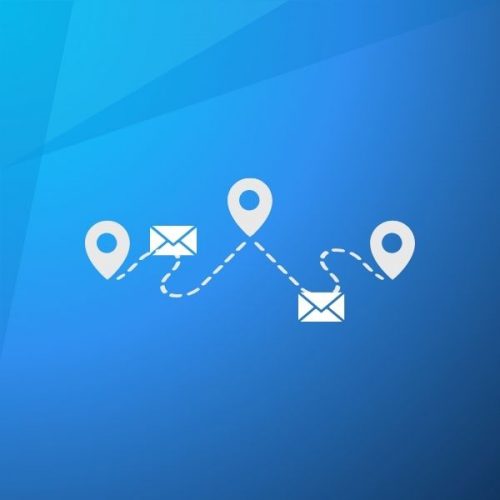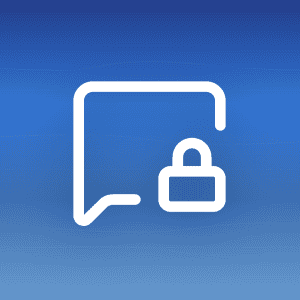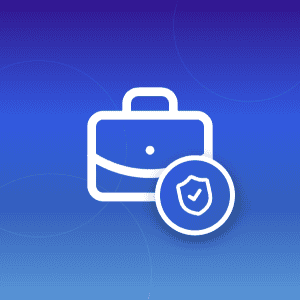Email remains one of the most widely used professional and personal communication tools. Yet, as inboxes grow and conversations evolve, the term “email trail” becomes increasingly relevant. But what exactly is an email trail—and why should you care?
Whether you’re managing client communications, ensuring legal compliance, or simply trying to follow a long discussion, understanding email trails can help you stay organized and protect your privacy.
In this article, we’ll break down what email trails are, how they work, why they matter, and how to manage them securely.
Get the latest privacy news in your inbox
Sign up to the Mailfence Newsletter.
What is an Email Trail?
Let’s start with a definition of an email trail.
An email trail is the chronological sequence of email messages exchanged between two or more parties, typically maintained by replying or forwarding within the same thread.
Think of it as a digital breadcrumb path that captures an entire conversation—complete with timestamps, replies, forwarded content, attachments, and metadata.
Most modern email clients automatically include previous messages in the body when you hit “Reply” or “Reply All.” Over time, this creates a trail that preserves the communication history.
How Email Trails Work
When you reply to an email, your email client (like Gmail, Outlook, or Mailfence) embeds the original message below your response. As each participant continues the discussion, replies stack on top of previous ones, forming a layered structure.
Here’s how the process typically unfolds:
- Initial Email: Person A sends a message.
- Reply: Person B replies; the original email is included.
- Forwarding: Person A forwards the thread to Person C.
- Reply All: The entire group replies, expanding the trail.
Each step adds new metadata—like date, sender, and subject—preserving context and intent. Attachments and formatting may also carry over, depending on the email service and settings.
Common Use Cases of Email Trails
1. Professional Communication
Teams rely on email trails to document projects, decisions, and client conversations. Without an email trail, you would have no trace of what has been said or agreed upon.
2. Legal and Compliance
In legal proceedings, email trails can serve as evidence. Regulators often require businesses to retain trails for auditing, dispute resolution, or data retention compliance. Read our article on email compliance here.
3. Customer Support
Support agents track customer issues through trails to see what’s been done, who handled the ticket, and what’s pending.
4. Personal Reference
You might refer to an old email trail to recall past discussions, confirm instructions, or retrieve attachments.
Benefits of Email Trails
Context Preservation
Email trails help recipients understand the full conversation—even if they’re joining late. You can also organize your inbox for better clarity.
Transparency and Accountability
Each message is timestamped and attributed to a sender. This builds a traceable history of who said what.
Legal Protection
Email trails can provide proof of agreements, responsibilities, and actions—making them valuable in disputes or audits. In many cases, emails are considered legal documents.
Collaboration
Having everything in one place allows teams to work more efficiently without missing important details.
Archival and Searchability
Email clients archive trails, enabling you to search for specific threads or keywords.
Risks and Downsides
Privacy Exposure
Each forwarded or CC email risks exposing sensitive information to unintended recipients. An embedded trail may include confidential data not meant for wider sharing. Old attachments or replies in a forwarded trail could leak proprietary or personal data. Check out our email privacy tips right here.
Thread Bloat
Long conversations become unwieldy. Threads can stretch across dozens of replies, making them harder to read and follow.
Miscommunication
Outdated or overlooked replies in a trail may cause confusion. Without clear context, recipients might misinterpret the message.
Email Trails and Privacy
Email trails inherently involve metadata and message history—both of which carry privacy implications.
Every reply, forward, and CC increases the number of parties with access to the original content. If just one recipient’s email account is compromised, the entire trail may be exposed.
From a privacy-first perspective, email trails can be a double-edged sword. They’re necessary for communication continuity, but without safeguards, they can:
- Leak contact details or personal data.
- Expose internal discussions.
- Provide attackers with social engineering material.
That is why it’s vital to follow a few best practices
Best Practices for Managing Email Trails
1. Trim the Trail
Avoid including the entire history when it’s not needed. Most email clients let you delete or shorten quoted text before sending.
2. Review Before Forwarding
Always scan the entire trail to ensure there’s no confidential information that shouldn’t be shared. Some people often include a “confidentiality disclaimer” in their signature.
3. Use Clear Subject Lines
A well-labeled subject line helps keep threads organized and makes future searches easier.
4. Avoid Overusing “Reply All”
“Reply All” can unnecessarily expose conversations. Use it sparingly.
5. Encrypt Sensitive Emails
For confidential communications, use end-to-end encryption to protect the entire message—including the trail. Explore our encryption tools.
How Mailfence Enhances Email Trail Security
At Mailfence, privacy isn’t a feature—it’s a right. We take extra steps to protect your email trails from exposure, misuse, or unauthorized access.
End-to-End Encryption
Send encrypted emails using OpenPGP. This protects the entire email chain, not just the message body.
Digital Signatures
Authenticate your emails to ensure the content hasn’t been tampered with. This adds integrity to every message in your trail.
No Tracking, No Ads
We don’t harvest your content to serve ads or track your conversations. This drastically reduces metadata exposure risks.
Access Control
Decide who sees what. Mailfence allows secure document sharing and email access management with granular permissions.
Symmetric Encryption
For those who aren’t using PGP, Mailfence also offers password-protected messages, making it easier to securely share trails with anyone.
Conclusion
Email trails are essential for collaboration, record-keeping, and accountability. But they also carry privacy, security, and compliance implications that shouldn’t be ignored.
By understanding how email trails work and implementing best practices, you can retain the benefits while minimizing the risks.
At Mailfence, we provide the tools you need to communicate securely, protect your data, and stay in control of your conversations—every step of the trail.
Ready to take back control of your privacy?
Try Mailfence today – your secure email starts here.



